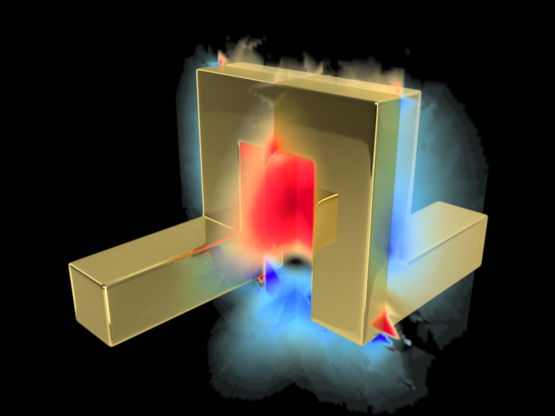Chiral nanophotonics
Chirality is a universal property of molecules and matter in general. Chiral objects cannot be superposed with their own mirror image, i.e., the object and the mirror image constitute two enantiomers of opposite handedness. The handedness determines how such chiral objects interact with their environment. For instance, the handedness of chiral molecules can have a huge impact on the chemical interaction with a biological system, since DNA and proteins are chiral as well. Therefore, enantiomer discrimination is of utmost importance in medicine, chemistry, and biology.
A common route for enantiomer discrimination is the interaction of chiral objects with chiral light. In circular dichroism spectroscopy, the difference in absorbance of left- and right-handed circularly polarized light is measured, with the sign of the circular dichroism being correlated with the handedness of the enantiomers. However, the absorption difference is rather small, so that conventional circular dichroism spectroscopy cannot be used on the single- and few-molecule level.
One possibility to enhance chiral light-matter interaction is to use nanophotonic resonators to tailor the local electromagnetic fields. Our aim is to gain a better understanding of this interaction and how to use it for applications such as enantiomer discrimination. Here, we apply both sophisticated full-wave numerical calculations as well as semi-analytical approaches based on the theory of resonant states.
